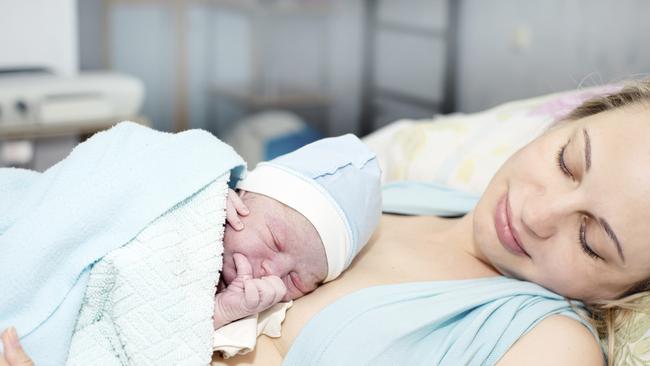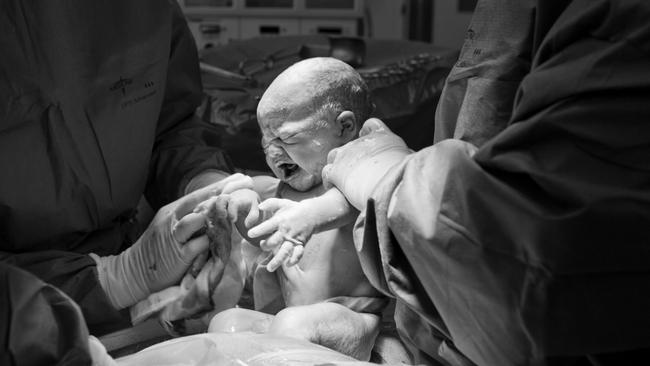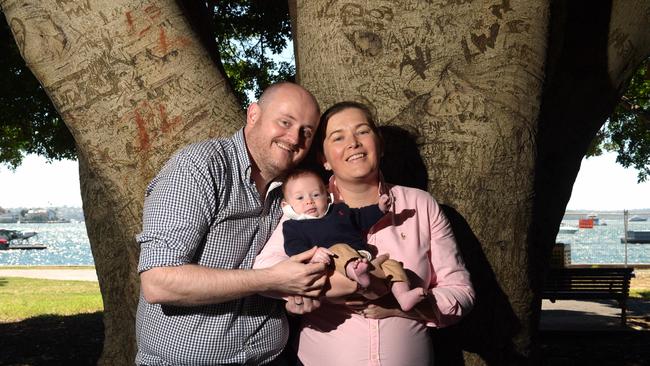Caesarian birthrate increase at private hospitals against NSW Health policy of natural delivery
More Sydney mums are choosing to have caesarean sections despite an “ideological” NSW Government policy to push women towards ‘natural’ delivery.

Hornsby
Don't miss out on the headlines from Hornsby. Followed categories will be added to My News.
More Sydney mums are choosing to have caesarean sections despite an “ideological” NSW Government policy to push women towards ‘natural’ delivery.
Across NSW public hospitals do elective C-sections at about half the rate of private hospitals, who are not bound by NSW Health directives.
More than 40% of 2308 births at Prince of Wales Private Hospital were by elective C-section — not vaginal births or emergency Caesareans — a leap from 23% in 2001, the latest data shows.
At the (Public) Royal Hospital for Women, elective Caesareans accounted for 15% of births — although this was up from 12.9% at the start of the century, NSW Department of Health figures show.
Dr Michael Coglin, chief medical officer at Healthscope, which owns POW Private, declined to say why the hospital was among the highest in the state for elective C-sections. He said the overall trend toward more C-sections coincided with a decline in infant mortality.
Dr Rahul Sen, an obstetrician practising at the Royal and POW Private explains on his website that the Royal “is less supportive of elective caesarean section on request” while POW Private “is happy to support elective caesarean section if you want one”.
The rise in C-sections came despite the NSW Department of Health’s 2010 policy “Toward Normal Birth” which was intent on “increasing the proportion of women who have a vaginal birth” and was strongly contested by some health professionals.
Royal Australian and New Zealand College of Obstetricians and Gynaecologists vice president Dr Vijay Roach works at both Royal North Shore public and private hospitals. He said there is an obstetrician and midwife divide along “ideological” lines about the best way to give birth.
“The problem is the ideological position that NSW Health policy uses by calling it Towards Normal Birth,” Dr Roach said. “Normal and natural are false concepts in 2017. We don’t accept normal birth defects and give women folate and iodine and intervene to prevent mothers dying.”
NSW Health said an elective caesarean costs $3024 more (on average) than a vaginal delivery in 2015/16. Their policy — Towards Normal Birth — “recognises the spectrum of birth, from normal birth to caesarean section”.
“While it promotes normal birth and reduction of technological intervention where possible, the policy acknowledges that some women will have or develop risk factors that may require intervention,” a NSW Health spokeswoman said.
A complicated vaginal birth may cause “significant trauma” either physical or psychological for a woman, and one damaged baby will cost a lifetime of care, Dr Roach said.

Bureau of Health Information chief executive Dr Jean-Frederic Levesque said women chose to have a C-section either because of risk factors, like age or having a previous C-section or it may be their choice to have delivery this way.
Being “too posh to push” is unlikely to be the main factor changing the way babies arrive.
Professor Michael Chapman (Head of Women’s and Children’s Health at UNSW and St George Public Hospital) said there is “a big push on to be as natural as possible” but in this day and age Caesarian risks are “incredibly low”.
“Another factor is private obstetricians are more likely to be sued if anything goes wrong and so are more cautious in situations where the baby may be at risk,” Prof Chapman said.
Dr Roach said it’s not about whether the doctor thinks it’s a good idea to have a caesar or not. “It’s quite paternalistic to say women shouldn’t have a C-section or pain relief. Women have a right to be informed,” Dr Roach said. “The question is are women being fully informed?
“There are potential consequences either way.”

Jac Mclloyd, an engineer from Bellevue Hill, who gave birth to her son, Thomas, nine weeks ago via a scheduled C-section, was heartbroken when advised against a ‘normal vaginal’ birth.
At 28 weeks pregnant she learned Thomas was breech, and by 35 weeks — when he hadn’t turned head down — was strongly advised to book a caesarean. “A big factor was the scarring in my pelvic sling from extensive surgery for endometriosis”, she said.
After intensive counselling by her GP and gynaecologist she booked a C-section, delivering Thomas at 39 weeks as a private patient at the Royal.
“I didn’t want to be a hero for the self imposed cause and then not be able to be the kind of mother I want to be because I ignored advice and was damaged giving birth,” said Ms McLloyd, aged 35. “I am disappointed I couldn’t have a natural birth and I did everything I could to have it, but not at the risk of my health.”
A Caesarean costs around $14,086 in Australia compared with a $9,089 for a vaginal birth, the Lancet medical journal reported in 2016.


